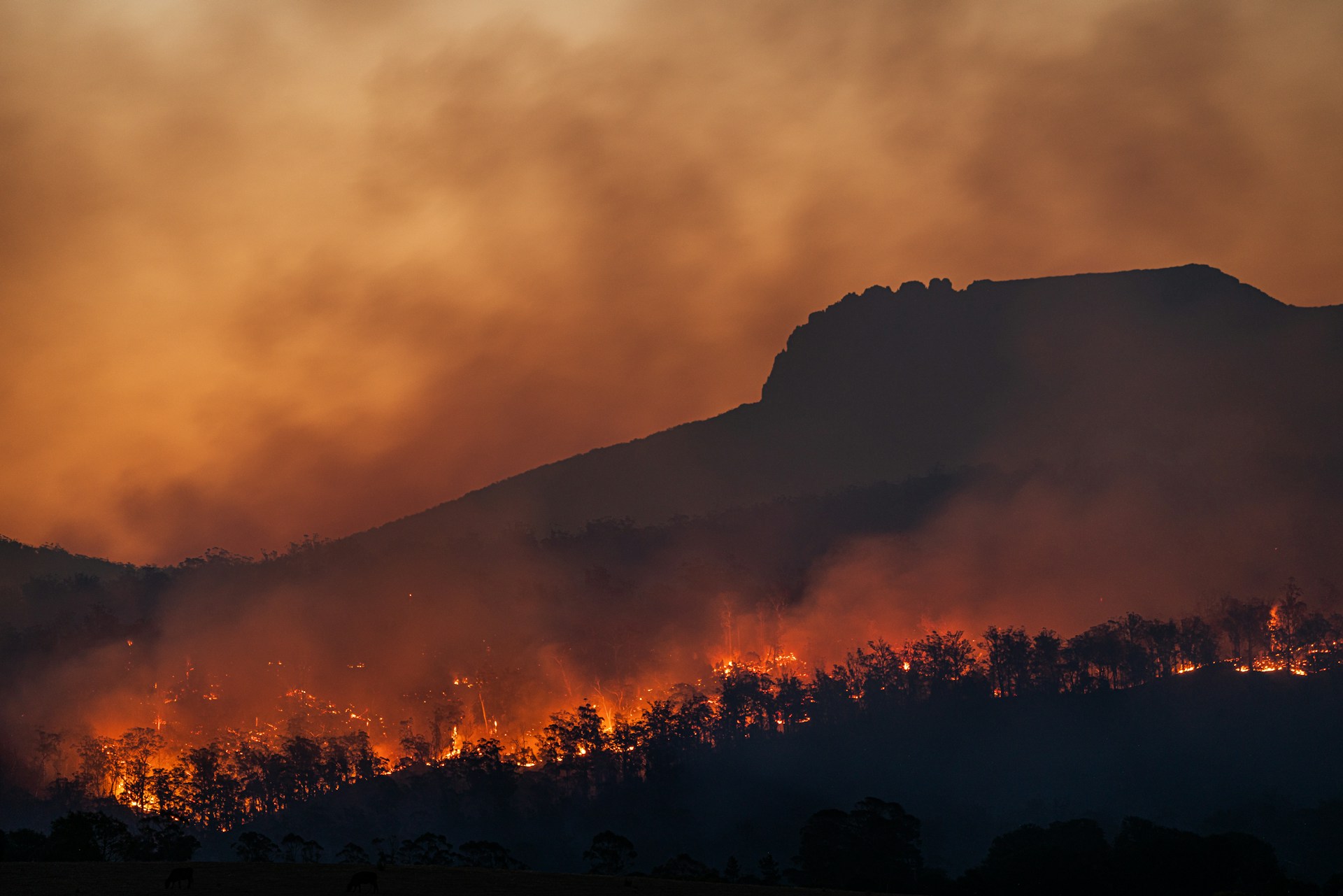Contents
- 1 – Deforestation and land use changes
- 2 – Agricultural practices and livestock farming
- 3 – Increase in greenhouse gas emissions
- 4 – Urbanization and population growth
- 5 Consequences of Global Warming:
- 6 – Rising global temperatures and heatwaves
- 7 – Melting of polar ice caps and rising sea levels
- 8 – Extreme weather events such as hurricanes and droughts
- 9 – Loss of biodiversity and disruption of ecosystems
- 10 – Health impacts on humans, including respiratory diseases and heat-related illnesses
– Deforestation and land use changes
Deforestation and land use changes have been major contributors to the ongoing global climate crisis. The destruction of forests for agriculture, urbanization, and industrial purposes has led to the loss of valuable carbon sinks, biodiversity, and natural habitats. As trees are cut down, less carbon dioxide is absorbed from the atmosphere, resulting in increased greenhouse gas emissions and rising global temperatures.
Moreover, land use changes, such as converting forests into farmlands or residential areas, further exacerbate the environmental impact. These changes disrupt the delicate balance of ecosystems, leading to the loss of plant and animal species, as well as the displacement of indigenous communities who depend on these natural resources for their livelihoods. The clearance of land also increases the risk of soil erosion and degradation, limiting its ability to support agriculture and exacerbating food security challenges.
– Agricultural practices and livestock farming
Agricultural practices and livestock farming play a significant role in global warming. The extensive use of chemical fertilizers and pesticides in agriculture contributes to the release of greenhouse gases into the atmosphere. Additionally, the farming of livestock, especially cattle, is a major source of emissions, particularly methane. The clearing of forests for the expansion of farmland also contributes to deforestation, which further exacerbates the problem of global warming.
The impact of these practices is evident in the rising global temperatures and the occurrence of more frequent and severe heatwaves. The excessive cultivation of land and overgrazing by livestock also contribute to soil erosion and degradation, leading to decreased agricultural productivity. Moreover, the emissions from agricultural activities, such as nitrous oxide released from fertilizers, contribute to the destruction of the ozone layer. These practices not only contribute to global warming but also have long-term consequences for the sustainability of our ecosystems and the health of our planet.
– Increase in greenhouse gas emissions
The increase in greenhouse gas emissions is a growing concern in today’s world. As human activities continue to release large amounts of carbon dioxide, methane, and other gases into the atmosphere, the Earth’s natural balance is being disrupted. This rise in greenhouse gas emissions primarily comes from the burning of fossil fuels for energy production, transportation, and industrial processes. Additionally, deforestation and land use changes also contribute to the release of carbon stored in vegetation and soils.
The consequences of this increase in greenhouse gas emissions are far-reaching. The most significant impact is the trapping of heat in the Earth’s atmosphere, leading to rising global temperatures. This rise in temperature has resulted in more frequent and intense heatwaves across the globe. Furthermore, the melting of polar ice caps and rising sea levels threaten coastal areas, increasing the risk of flooding and coastal erosion. The increase in greenhouse gas emissions also contributes to extreme weather events such as hurricanes and droughts, causing widespread destruction and economic losses. Additionally, the disruption of ecosystems due to changing climate conditions threatens biodiversity, jeopardizing the balance and functioning of various ecosystems. The health impacts on humans are also a consequence of this increase, as respiratory diseases and heat-related illnesses become more prevalent.
– Urbanization and population growth
The rapid process of urbanization has led to significant changes in land use patterns. As cities expand and populations grow, more land is being transformed from natural habitats into urban areas. This results in the loss of valuable ecosystems, such as forests and wetlands, which are crucial for maintaining biodiversity and providing ecosystem services. Additionally, the increase in impervious surfaces, such as concrete and asphalt, contributes to the heat island effect, leading to higher local temperatures and exacerbating the impacts of global warming.
Furthermore, population growth adds pressure to already strained resources and infrastructure. As more people migrate to urban areas in search of better opportunities, the demand for housing, energy, food, and water increases. This puts a strain on local resources and can lead to issues such as water scarcity, inadequate sanitation, and overcrowding. It also results in increased waste generation and pollution, exacerbating environmental challenges and contributing to climate change. As cities continue to expand and populations rise, addressing the challenges of urbanization and population growth becomes crucial in mitigating the impacts of global warming and ensuring sustainable development.
Consequences of Global Warming:
Rising global temperatures and heatwaves are one of the dire consequences of global warming. As greenhouse gas emissions trap heat in the Earth’s atmosphere, the planet’s average temperature steadily rises over time. This increase in temperature has far-reaching effects, leading to longer and more intense heatwaves. Heatwaves not only pose immediate health risks to vulnerable populations but also affect ecosystems and agriculture. Heat stress can damage crops, leading to reduced yields and food shortages in certain regions. Additionally, heatwaves can exacerbate drought conditions and increase the risk of wildfires, further impacting ecosystems and biodiversity.
Melting of polar ice caps and rising sea levels are another significant consequence of global warming. As temperatures warm, glaciers and ice sheets in Greenland and Antarctica are melting at an accelerated rate. This melting ice contributes to the rise in global sea levels, posing a threat to coastal communities and low-lying regions around the world. Rising sea levels can lead to coastal erosion, saltwater intrusion into fresh groundwater sources, and increased vulnerability to storm surges during extreme weather events. Furthermore, the loss of polar ice caps has a cascading effect on the Earth’s climate system, disrupting ocean currents and potentially altering weather patterns on a global scale.
– Rising global temperatures and heatwaves
Global warming is leading to a steady increase in temperatures across the world. As a result, heatwaves are becoming more frequent and intense. These prolonged periods of excessive heat pose serious risks to both human health and the environment.
One of the most immediate impacts of rising temperatures is the increased risk of heat-related illnesses. Heatwaves can cause heat exhaustion, heatstroke, and dehydration, particularly among vulnerable populations such as the elderly and young children. In addition, extreme heat can worsen the symptoms of existing cardiovascular and respiratory conditions. These health effects highlight the urgent need for preventive measures and accessible cooling centers during heatwaves.
On the environmental front, rising temperatures also exacerbate drought conditions, leading to water scarcity and agricultural challenges. Heatwaves can cause wildfires to spread rapidly, destroying vast areas of forests and habitats. Moreover, intense heat can cause the melting of glaciers and polar ice caps, contributing to the rise in sea levels and threatening coastal regions.
The consequences of rising global temperatures and heatwaves are multifaceted, impacting both human well-being and the delicate balance of ecosystems. Urgent actions and sustainable practices are crucial to mitigate the effects of this pressing issue.
– Melting of polar ice caps and rising sea levels
The melting of polar ice caps is a direct consequence of global warming. As temperatures continue to rise, the ice sheets in the Arctic and Antarctica are significantly diminishing. This process leads to the rising sea levels observed across the globe.
The consequences of the melting polar ice caps and rising sea levels are far-reaching. Coastal areas and low-lying islands are particularly vulnerable to the encroaching waters, risking the displacement of communities and the loss of valuable habitats and ecosystems. Furthermore, the increased sea levels also intensify the severity of coastal flooding during storms and hurricanes, exacerbating the potential for destruction and loss of life.
– Extreme weather events such as hurricanes and droughts
Extreme weather events such as hurricanes and droughts have become increasingly frequent and intense due to global warming. These catastrophic occurrences not only put human lives at risk but also result in significant economic and infrastructural damage. Hurricanes, for instance, bring about strong winds, storm surges, and heavy rainfall, which can lead to widespread flooding, property destruction, and even loss of life. The devastation caused by these natural disasters often takes years to recover from, leaving communities struggling to rebuild and cope with prolonged disruption.
Similarly, droughts, characterized by extended periods of little to no rainfall, have severe consequences for agriculture, water supplies, and overall ecosystem health. These extended dry spells can lead to crop failures, food shortages, and the depletion of natural resources such as lakes and rivers. Additionally, droughts can spark wildfires, further exacerbating the destruction of forests and habitats. With the increasing frequency of extreme weather events, societies around the world face the challenge of adapting to these new realities, finding ways to mitigate their impact, and protecting vulnerable communities from their devastating effects.
– Loss of biodiversity and disruption of ecosystems
One of the concerning consequences of global warming is the loss of biodiversity and disruption of ecosystems. As temperatures rise and weather patterns become more unpredictable, many species are struggling to adapt and survive. This has resulted in the extinction of numerous plant and animal species, including those involved in vital ecological processes such as pollination and seed dispersal. The loss of these species not only impacts the balance and resilience of ecosystems but also threatens the overall functioning and productivity of natural systems.
In addition to the direct loss of species, global warming also leads to the degradation and fragmentation of habitats. Rising temperatures and changing precipitation patterns affect the distribution and composition of ecosystems, disrupting the natural interconnectedness between different species and their environments. As habitats shrink or shift, many species are facing a struggle to find suitable environments to survive, reproduce, and fulfill their ecological roles. This disruption can have far-reaching implications, including the collapse of food chains, the decline of important ecosystem services, and a further decline in biodiversity.
The consequences of global warming extend beyond environmental changes and impact human health as well. Rising temperatures can result in a higher occurrence of respiratory diseases, such as asthma and allergies, due to increased pollen production and the expansion of allergenic plants. Additionally, heat-related illnesses, including heat exhaustion and heatstroke, become more prevalent as extreme heatwaves become more frequent and intense.
Exposure to air pollution, which is heightened by global warming, can also lead to respiratory problems. As temperatures rise, the chemical reactions that produce smog and air pollutants are accelerated, worsening air quality. This can aggravate existing respiratory conditions and increase the risk of respiratory infections and diseases.
The combination of rising temperatures, poor air quality, and extreme heat events poses a significant threat to human health. Individuals with pre-existing respiratory conditions are particularly vulnerable, but the general population is also at risk. As global warming continues, the importance of addressing and mitigating these health impacts becomes imperative.

